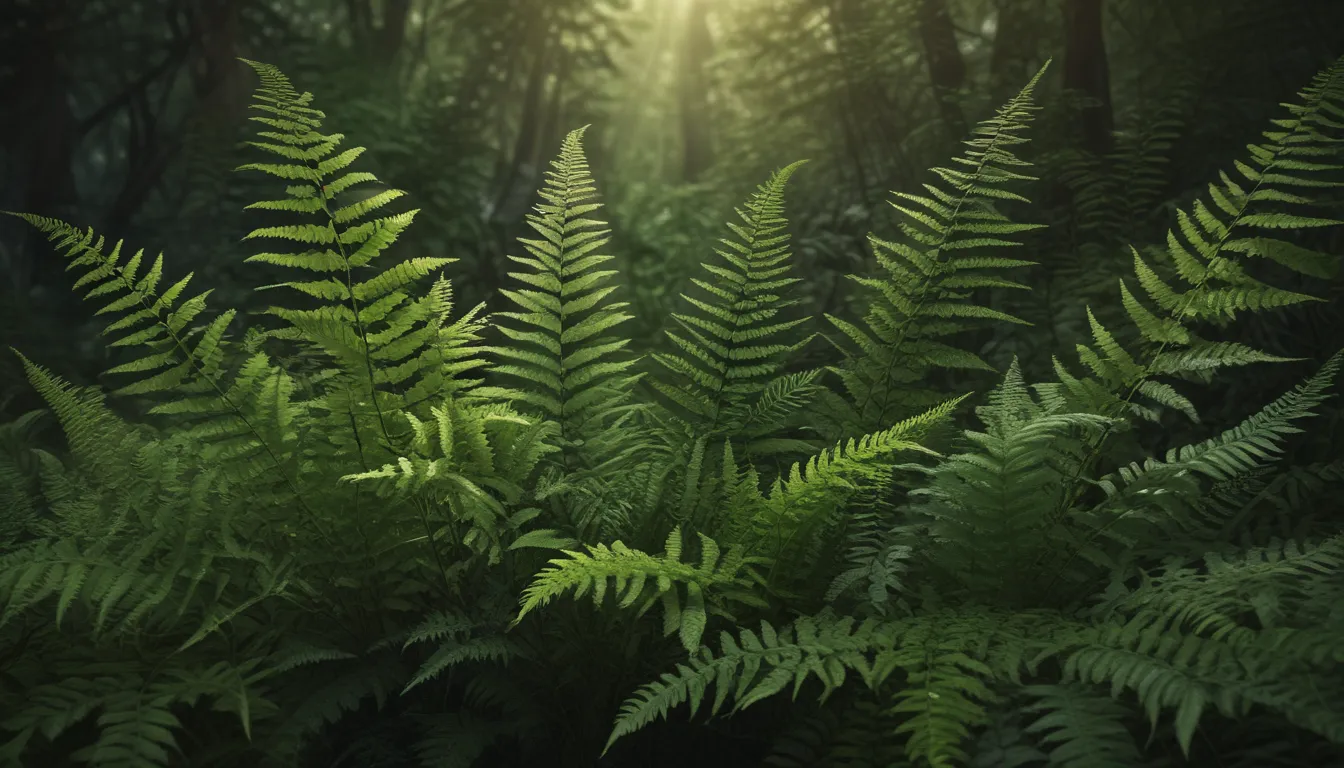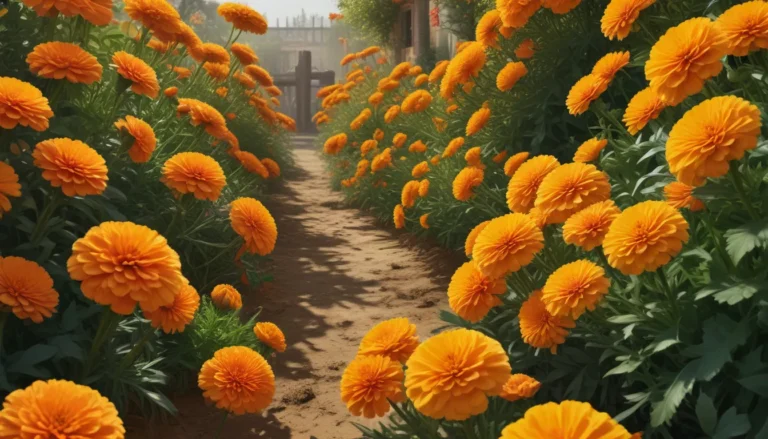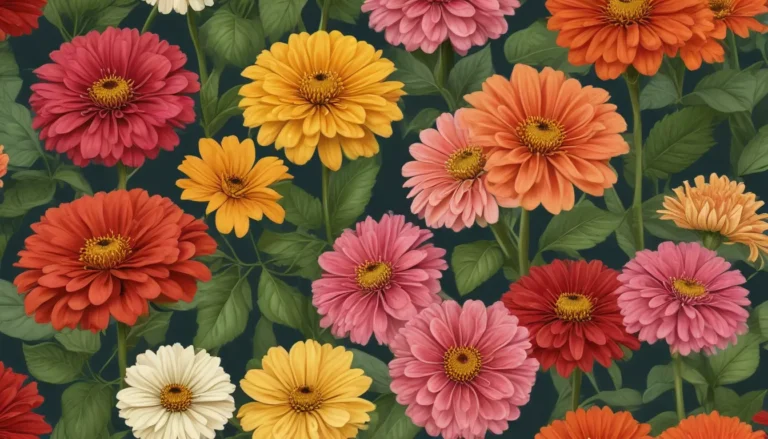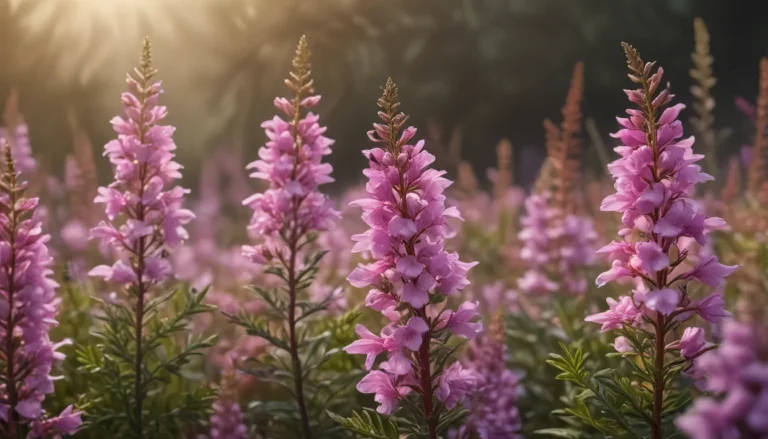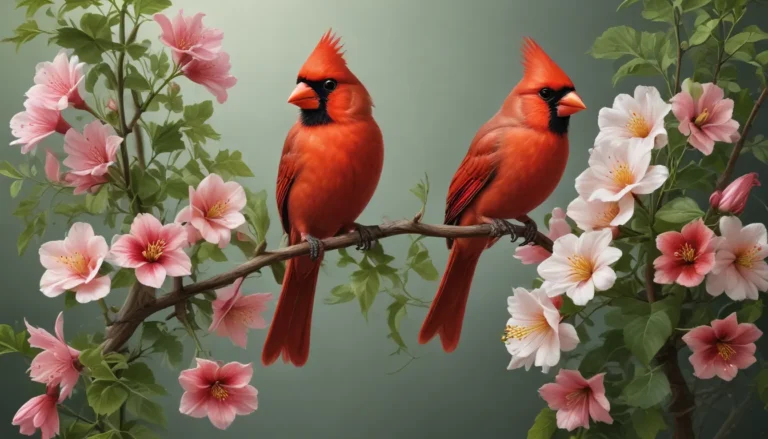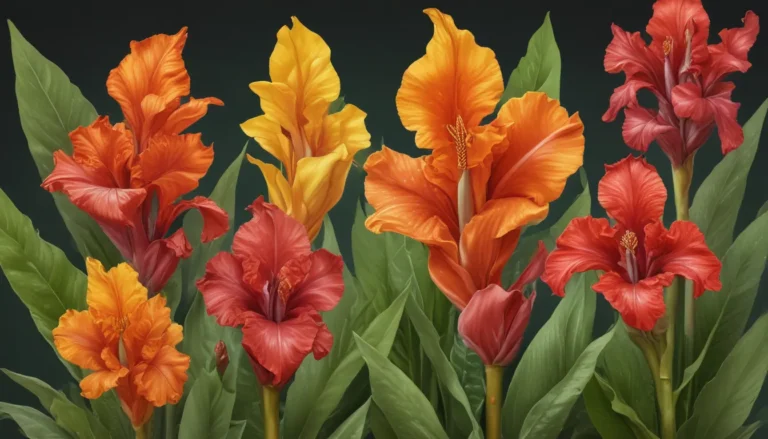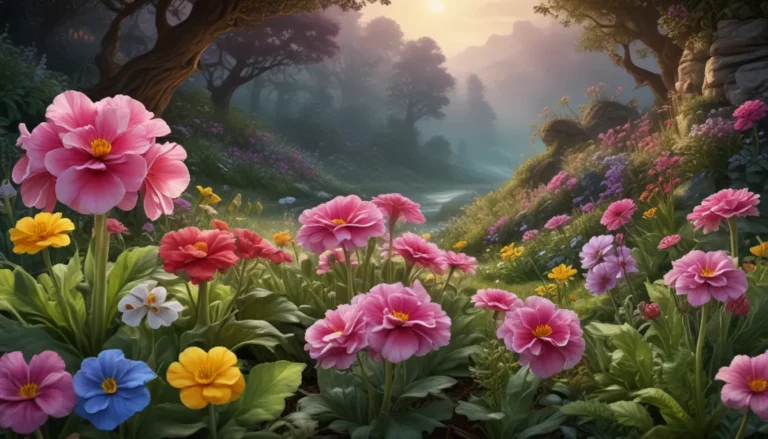The pictures we use in our articles might not show exactly what the words say. We choose these pictures to make you interested in reading more. The pictures work together with the words but don’t take their place. The words still tell you the important facts.
Ferns have graced our planet for millions of years, standing as one of the oldest treasures Earth has to offer. Their delicate, feathery leaves capture our attention, but there is so much more to these green wonders than meets the eye. Join us as we uncover 18 surprising facts about ferns that will deepen your appreciation for their resilience, diversity, and unique characteristics. So, grab a cozy cup of tea, sit back, and prepare to be amazed by the enchanting world of ferns.
Unearthing the Secrets of Ferns:
Ferns have graced our planet for millions of years, standing as one of the oldest treasures Earth has to offer. Their delicate, feathery leaves capture our attention, but there is so much more to these green wonders than meets the eye. Join us as we uncover 18 surprising facts about ferns that will deepen your appreciation for their resilience, diversity, and unique characteristics. So, grab a cozy cup of tea, sit back, and prepare to be amazed by the enchanting world of ferns.
Ferns Through Time:
Ferns are one of the oldest types of plants on Earth, with fossils dating back over 360 million years. They have successfully survived through various periods of Earth's history, standing the test of time with grace and resilience.
The Diversity of Ferns:
With over 10,000 different species of fern, the diversity within this plant family is truly astounding. From delicate maidenhair ferns to towering tree ferns, each species boasts its own unique characteristics and adaptations, adding to the charm of these botanical wonders.
Unique Reproduction:
Unlike most plants, ferns do not produce flowers or seeds. Instead, they rely on spores for reproduction. These tiny, dust-like spores are released from specialized structures called sporangia, paving the way for the next generation of ferns to thrive.
Adaptable Beauties:
From lush rainforests to dry desert regions, ferns have proven their adaptability by thriving in diverse environments around the world. Their ability to acclimate to various climates and habitats is a testament to their resilience and versatility.
Epiphytic Wonders:
Some ferns have adopted an epiphytic lifestyle, growing on the surface of other plants or structures for support. Despite using other plants as a foothold, these epiphytic ferns do not rely on them for nutrients, showcasing a unique survival strategy in the botanical world.
Green Guardians:
Studies have shown that ferns are excellent air purifiers, effectively removing toxins and pollutants from indoor spaces. By incorporating ferns into your environment, you can not only enhance the aesthetic appeal but also promote better air quality for a healthier living space.
Medicinal Marvels:
Throughout history, ferns have been revered for their medicinal properties. Various cultures have utilized ferns to treat a range of ailments, including digestive issues, skin conditions, and fevers. The healing power of these botanical treasures has left a lasting imprint on traditional medicine practices.
Embracing the Fascinating World of Ferns:
From ancient civilizations to modern scientific discoveries, ferns have woven themselves into the tapestry of human history with their unique and captivating presence. As we continue to uncover the mysteries of these resilient plants, their beauty and significance only deepen.
Resilient Survivors:
Certain fern species, such as the resurrection fern, are able to withstand extreme drought by entering a dormant state until water becomes available again. This remarkable survival strategy showcases the resilience and adaptability of ferns in the face of challenging conditions.
Cultural Significance:
In ancient societies, ferns held symbolic significance, often representing fertility and rebirth. They were integrated into traditional ceremonies and rituals, highlighting the profound impact these ancient plants had on human culture and beliefs.
Aesthetic and Practical Delights:
Beyond their beauty, ferns serve practical purposes in landscaping and gardening, providing shade, ground cover, and erosion control. By incorporating ferns into your outdoor spaces, you can enhance both the visual appeal and environmental sustainability of your garden or landscape.
Nature’s Artistry:
Ferns boast a wide range of leaf shapes and structures, from intricately lobed leaves to feather-like fronds. Their diverse foliage adds visual interest and texture to any garden or landscape, creating a harmonious blend of nature's artistry and beauty.
An Unseen Harmony:
Some ferns form symbiotic relationships with fungi, creating a mutualistic partnership where both organisms benefit from each other's presence. This unseen harmony in nature highlights the interconnectedness of all living beings, showcasing the intricate web of relationships within the natural world.
Timeless Inspirations:
The elegance and beauty of ferns have inspired artists and poets for centuries, with their delicate fronds symbolizing resilience, growth, and the intricate patterns of nature. From intricate botanical illustrations to poetic verses, ferns continue to serve as a timeless muse for creative expressions across different art forms.
A Splash of Color:
While most ferns showcase various shades of green, there are also vibrant varieties that exhibit hues of silver, purple, and even blue, adding a pop of color to any garden or indoor space. By incorporating these colorful ferns into your environment, you can create a visually stunning display that captures the essence of nature's vibrancy.
Scientific Intrigue:
Despite their ancient origins, ferns remain a subject of fascination for scientists, who study their evolution, ecology, and potential applications in various fields. The enduring appeal of ferns lies in their unique characteristics and adaptability, which continue to pique the curiosity of researchers and enthusiasts alike.
A Journey of Discovery:
As we unravel the mysteries of ferns, we embark on a journey of exploration and appreciation for these remarkable plants. From their ancient origins to their diverse adaptations, ferns offer a window into the remarkable resilience and beauty of the natural world.
Conclusion:
Ferns stand as a testament to the enduring power of nature, captivating us with their unique characteristics and enchanting beauty. Whether you're a seasoned plant enthusiast or simply appreciate the wonders of the natural world, learning about these 18 surprising facts about ferns is sure to deepen your understanding and appreciation for these remarkable botanical treasures. So, the next time you encounter a fern, take a moment to marvel at its intricate beauty and reflect on the incredible journey this ancient plant has undertaken throughout history.
FAQs About Ferns:
Curious minds often seek answers to common questions about ferns, unraveling the mysteries of these captivating plants. Here are some frequently asked questions to guide you on your journey of discovery:
- How long have ferns been around?
-
Ferns have been around for over 360 million years, making them one of the oldest groups of plants on Earth.
-
Do all ferns look the same?
-
No, ferns come in a wide variety of shapes, sizes, and colors. Some ferns have large fronds, while others have delicate, feathery ones, showcasing the diversity within this plant family.
-
Can I grow ferns indoors?
-
Yes, many fern species can be grown indoors with the right conditions, such as moderate humidity and indirect light, providing a touch of greenery and elegance to your indoor space.
-
Are ferns considered houseplants?
-
Yes, ferns are popular houseplants due to their graceful foliage and air-purifying properties, adding a touch of beauty and freshness to your home environment.
-
Are ferns easy to care for?
-
Generally, ferns require moderate care, preferring moist soil and indirect light. With proper watering and occasional fertilizing, ferns can thrive and bring beauty to your home or garden.
-
Can ferns survive in low light conditions?
-
While some ferns can tolerate lower light conditions, most prefer indirect light for optimal growth. Placing them in a location that receives medium to bright, filtered light is ideal for their well-being.
-
Are ferns considered invasive?
-
Most ferns are not considered invasive, but it's essential to research specific species before planting them outdoors, as some ferns may become invasive in certain regions.
-
Do ferns produce flowers?
-
No, ferns are non-flowering plants that reproduce through spores instead of flowers or seeds, showcasing their unique reproductive strategy in the botanical world.
-
Can ferns survive in dry conditions?
-
While most ferns prefer humid environments, some species have adapted to survive in dry conditions, such as the resurrection fern, demonstrating their remarkable resilience and adaptability.
-
Are ferns toxic to pets?
- While some fern species may be toxic to pets if ingested in large quantities, the majority are considered non-toxic. However, it's advisable to research specific fern species and consult with a veterinarian if you have any concerns about your pets' safety.
Explore the Wonder of Ferns:
At the heart of our commitment is the dedication to delivering accurate, engaging, and trustworthy content that enriches your understanding and appreciation of the natural world. Each fact shared on our platform is contributed by real users like you, bringing a diverse range of insights and information to light. Our team of dedicated editors meticulously review each submission, ensuring that the content we provide is not only fascinating but also credible. Trust in our mission to uphold the highest standards of quality and authenticity as you embark on a journey of discovery and learning with us.
